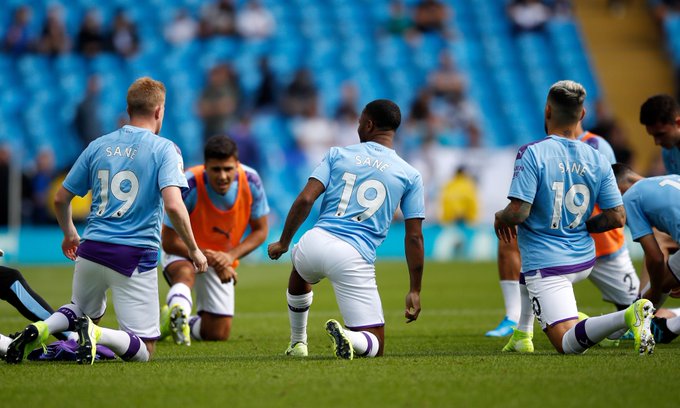"All our offensive moments of attacking ended in a foul. You can look at the statistics."

Tactical fouling is what the accusers call it - the act of curtailing opposition attacks through well-timed fouls.
Manchester United boss Ole Gunnar Solskjaer, former United boss Jose Mourinho and ex-United defender Gary Neville (there is a pattern emerging here), as well as former Premier League referee Mark Clattenburg, are among those to draw attention to it.
City boss Pep Guardiola has, on more than one occasion, rejected the notion he tells his side to purposefully foul opposition players.
But what exactly is tactical fouling? Are City getting an unfair reputation? And is there actually anything wrong with it?
The art of the tactical foul

The idea of the tactical foul is straightforward - if you give the ball away deep in the opponent's half, foul someone quickly and stop a counter-attack before it even begins.
It is an approach more likely to be adopted by attack-minded teams who throw a lot of players forward, making them more susceptible to being outnumbered in defense if they give the ball away.
The fouls will generally be soft ones - tugs or trips - to avoid bookings and red cards and will be committed high up the pitch.
"To suggest it's something that's come into the game recently is almost laughable," said BBC Radio 5 Live's Pat Nevin, a former Chelsea and Scotland winger.
"It's really old. It's always been done. You know if you are light defensively you take one for the team. You need to know the right time to do it. It's done very quickly."
Are Manchester City main offenders?
This is where the numbers come in and we'll use the entirety of last season to give us a decent data sample.
A quick glance at the total number of fouls suggests City are not constant foulers. They committed 328 fouls last season, with only Liverpool (315) conceding fewer.
But, of course, City and Liverpool dominate possession, meaning they have less time to foul opponents and so should always be near the bottom of the foul list.
Last season, 58.84% of City's 328 fouls were committed inside the opposition half, the third-highest in the Premier League.
Who was the highest? Liverpool, with 63.17% of their 315 fouls coming in the opponent's territory.
Who fouls quickest after losing the ball?
Now, if we're taking the definition of a tactical foul to be one that is committed soon after giving the ball away - surely that's what we need to be looking at?
On average last season, Man City's fouls after giving the ball away came 8.3 seconds after the ball was turned over.
Only Arsenal's 8.2 seconds was quicker.
But Liverpool also fouled, on average, 8.3 seconds after coughing up the ball, exactly the same time as City.
If we go back one more season, to 2017-18, the trend continues - City are on 7.6 seconds (second quickest) and Liverpool are on 8.3 seconds (third quickest).
Why are City so maligned?
So why are City perceived to be the big offenders?
There is the fact that City coach Mikel Arteta, in a documentary, was heard telling his players: "If there is a transition, make a foul."
But, as Nevin points out, it could also be because the number of players they have forward makes it look like City are in more jeopardy when they concede possession, making their tactical fouls more stark.
"It looks more clear with City because of the number of players they send forward. It will be quite a clear and obvious foul. It just looks a certain way," said Nevin.
"From the side it just jumps out at you. They attack with bigger numbers and then might be outnumbered and it might be five on four.
"It's utilising the rules to the best of your ability. I don't know any team that hasn't done that.
"If I was playing and we were four on two and I didn't take the foul, my manager would be furious. It's instinctive and intuitive."

